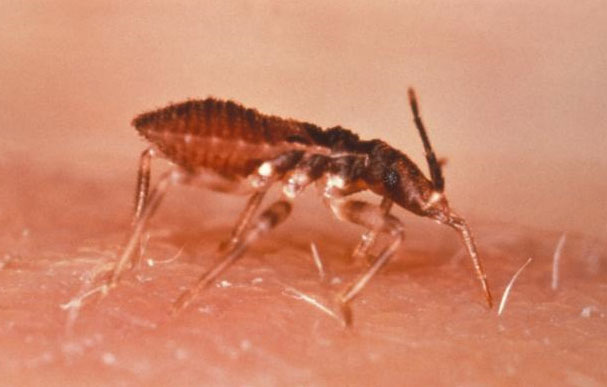Chagas Disease More Common in U.S. Than Thought

New cases of Chagas disease, a parasitic infection, occur almost exclusively in Latin America, but a new study suggests transmission of the disease may be less rare in the United States than thought.
While the Centers for Disease Control and Prevention estimates that 300,000 people in the U.S. have Chagas disease, it says most of them had already contracted it before coming to the country. Only seven new cases of Chagas disease have been documented in the United States.
For their study, researchers analyzed blood from 13 insects that carry the Chagas disease-causing parasite and transmit it when they bite. The insects, triatomine bugs, were collected from cities in Arizona and Southern California.
The researchers found that five of the bugs had fed on human blood — a surprisingly high result, given the scarcity of new U.S. cases.
"There might be cases out there that people haven't detected," said study researcher Lori Stevens, a biologist at the University of Vermont. "There is a large amount of feeding on humans."
People should be made more aware of triatomine bugs so they can take precautions against being bitten, Stevens said.
Delayed disease
Sign up for the Live Science daily newsletter now
Get the world’s most fascinating discoveries delivered straight to your inbox.
Chagas disease is caused by the parasite Trypanosoma cruzi. Most people who become infected experience no symptoms or have only mild bouts of fever, fatigue, body aches or vomiting, according to the CDC. But the disease can become chronic and cause serious complications years later, including heart failure, altered heart rhythm, cardiac arrest, and enlarged esophagus or difficulties with eating, the CDC says.
To find out what triatomine bugs in the United States feed on, Stevens and colleagues collected DNA from the blood meals of 13 of them. They learned that five had fed on humans, and five carried Trypanosoma cruzi. Fortunately, Stevens said, none of the bugs carrying the parasites had fed on people.
The study was limited by the expense of sequencing DNA, which limited the number of bugs that could be tested. Stevens said. The researchers plan to conduct further tests on a larger number of bugs using a less expensive, less labor-intensive test.
Some 8 million to 11 million people in Mexico, Central America, and South America are thought to have Chagas disease, and about 12,500 people die from it annually. The species of triatomine bugs in those countries are thought to transmit the disease more effectively than those in the United States do. However, as the U.S. becomes warmer due to climate change, species native to Latin American may be extending their range up north, increasing cases of disease here, Stevens said.
Other transmission routes
Less common routes of transmission include receipt of a blood transfusion from an infected person and spread of the parasite from mother to child during pregnancy.
Research from South America indicates oral spread of the parasite from consumption of food or drinks contaminated with the bugs' fecal matter is emerging as the primary way people in the Amazon become infected, according to a recent study in the journal Clinical Infectious Diseases.
Triatomine bugs are attracted to light, so it's a good idea to put screens on your windows to prevent them from coming in the house at night, Stevens said. In the United States, the bugs are found most commonly in the South, she said.
The study was published March 14 in the journal Emerging Infectious Diseases.
Pass it on: Chagas disease transmission may be more common in the United States than thought.
This story was provided by MyHealthNewsDaily, a sister site to LiveScience. Follow MyHealthNewsDaily staff writer Rachael Rettner on Twitter @RachaelRettner. Find us on Facebook.

Rachael is a Live Science contributor, and was a former channel editor and senior writer for Live Science between 2010 and 2022. She has a master's degree in journalism from New York University's Science, Health and Environmental Reporting Program. She also holds a B.S. in molecular biology and an M.S. in biology from the University of California, San Diego. Her work has appeared in Scienceline, The Washington Post and Scientific American.
Measles has long-term health consequences for kids. Vaccines can prevent all of them.
100% fatal brain disease strikes 3 people in Oregon









